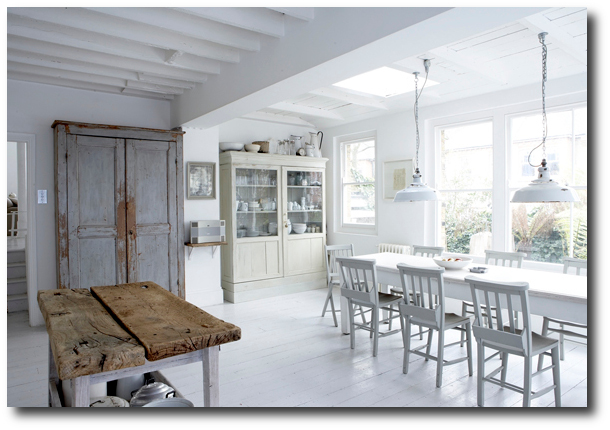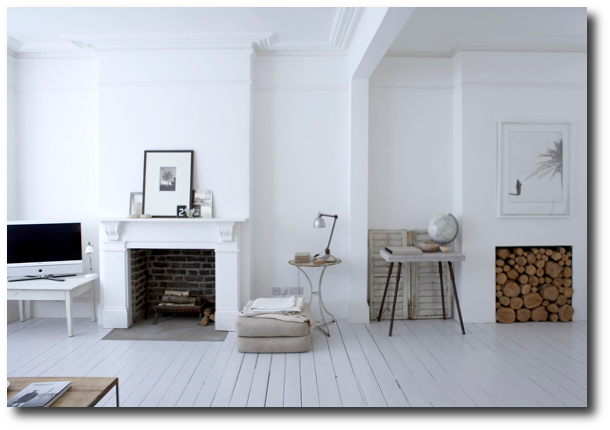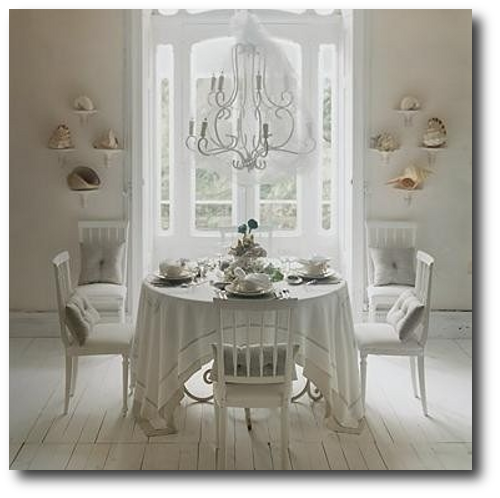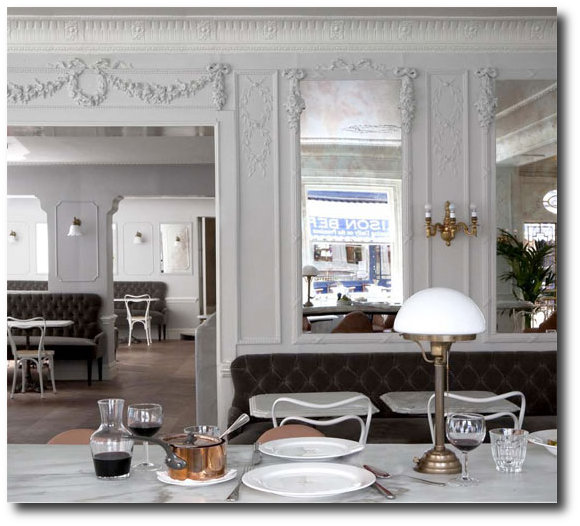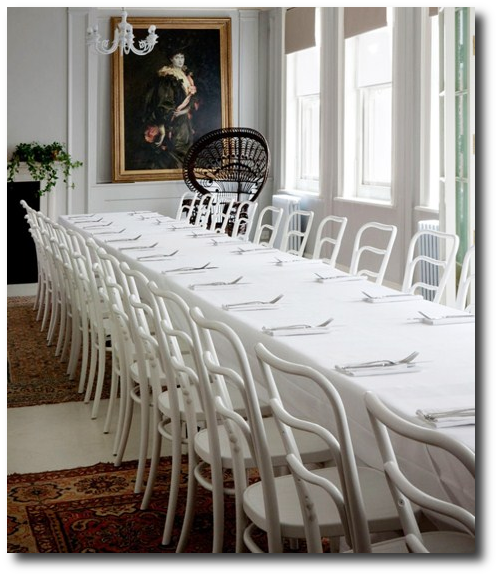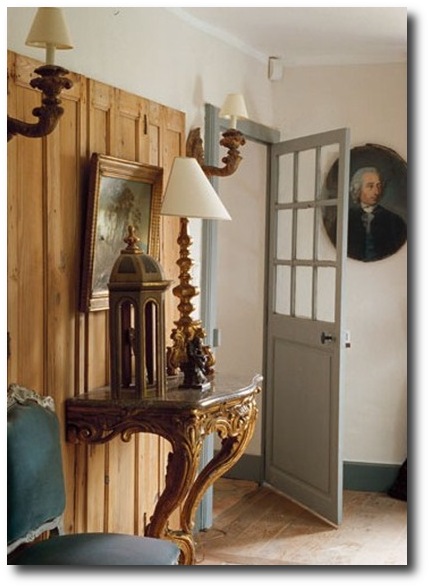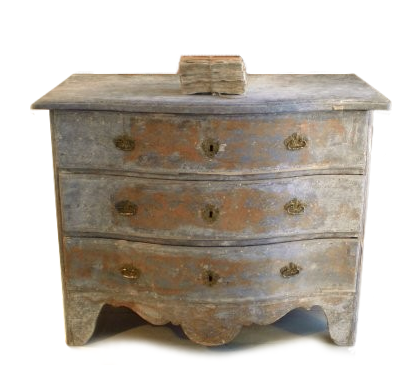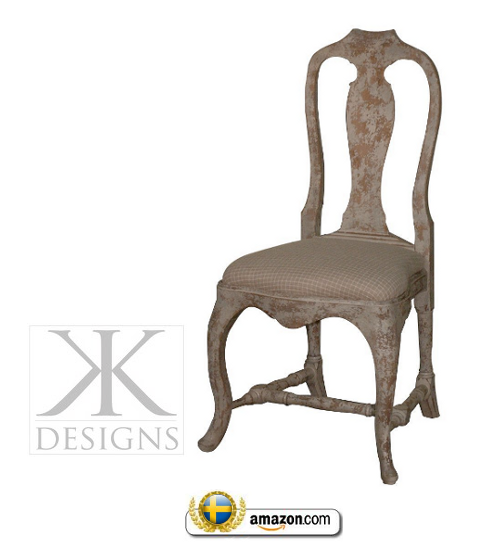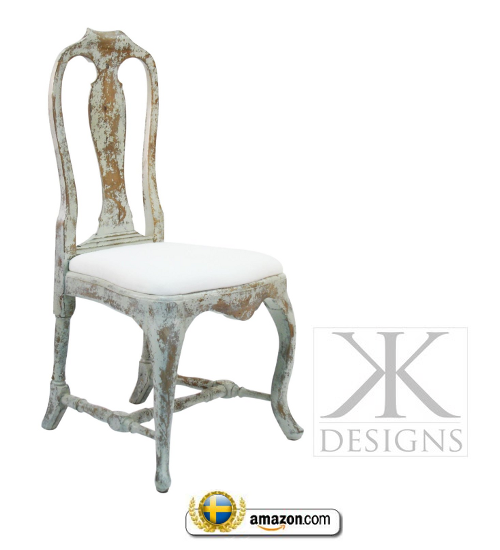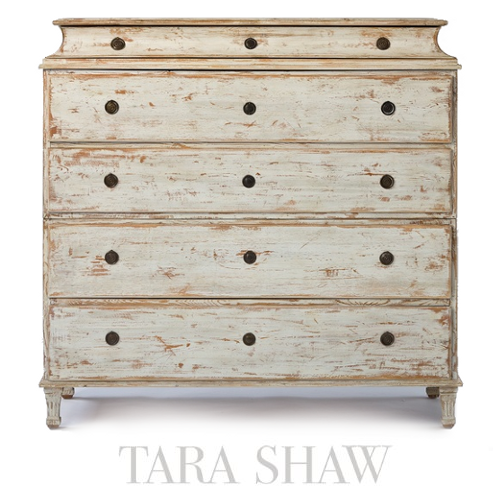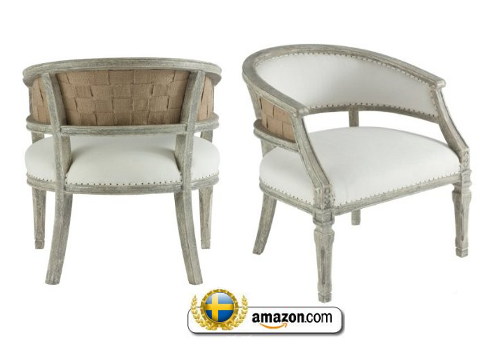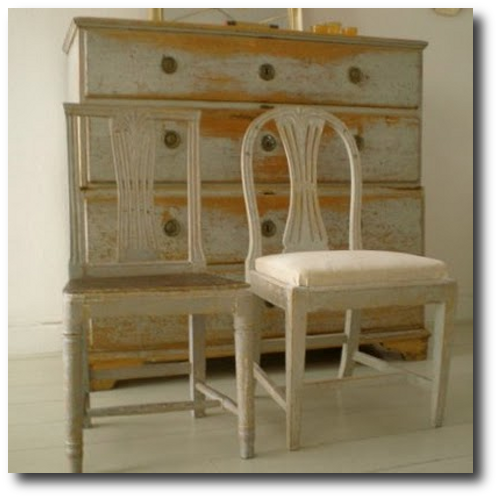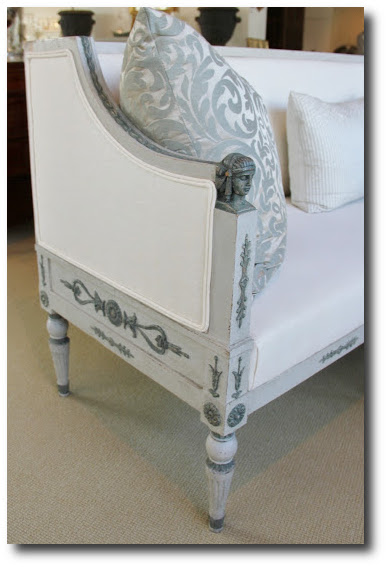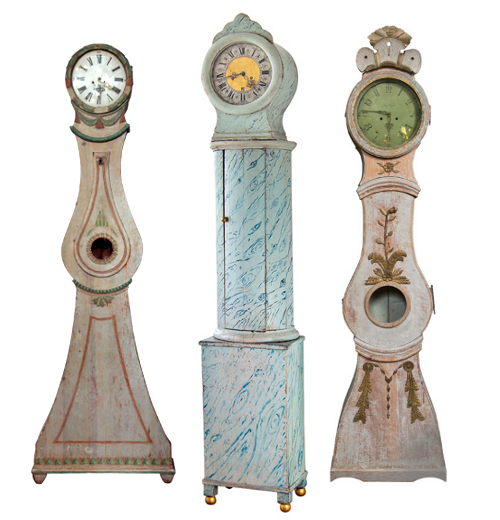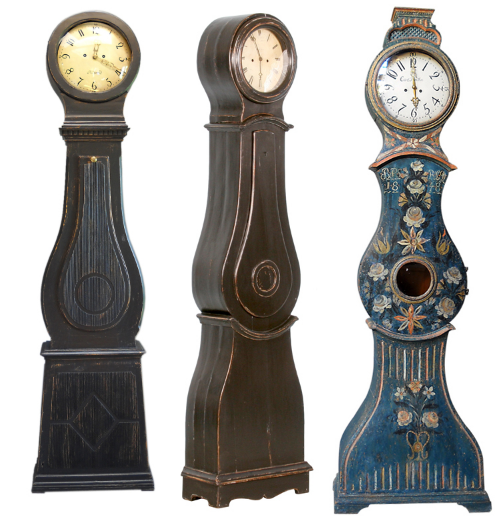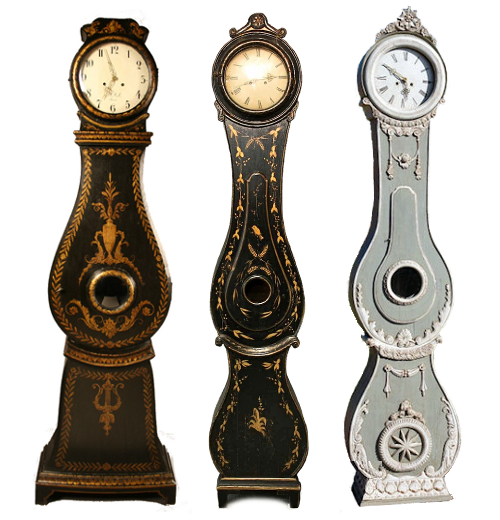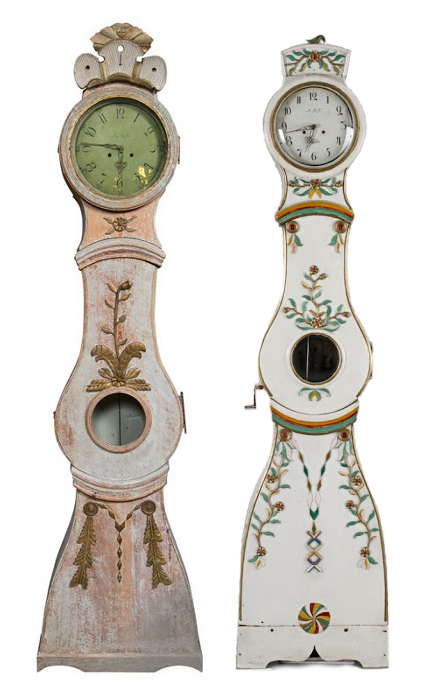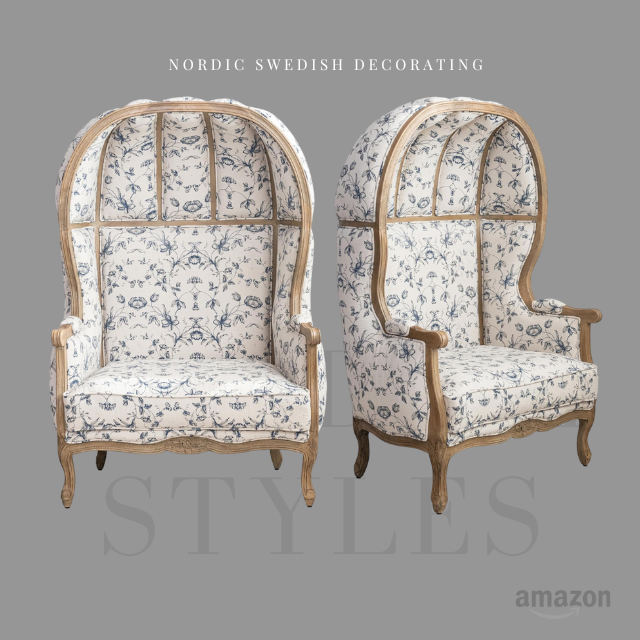
Mix Old and New Like the Scandinavians Do- Chloe Taylor
Co-Op Cotton and Linen Upholstered Balloon Chair – Amazon
Guest Post -Chloe Taylor
Scandinavian interior design has been on the very top when it comes to décor trends for years now, but this style, as we know it, is reflected in modern furniture, clean lines, functionality and minimalism; all of which are features ideal for a bedroom.
Has this design style always been like this?
Of course not.
Although it has always been characterized with light colors and natural elements, it hasn’t always been so clean-lined and minimalistic. The old Nordic pieces are equally as appealing as the new ones, and it would be a shame not to get the best of both worlds and times when decorating with this approach. Here are some things that will help you combine something old and something new, the Scandinavian way.
1. Know Both Styles.
To be able to truly know how to fit in two different design epochs, you need to be familiarized with both of them. Modern Scandinavian design is represented by light colors (usually white and grey), use of pale wood, clean lines, functional pieces and metallic accents.
As for the old style, its most prominent representative is Gustavian style, influenced by Neoclassical style, and it is characterized by white-washed or grey furniture, and pastel and golden accents.
2. Choose 1 Dominant
You can’t just put bell-shaped matte black pendant lamps above each side of the bed, and then install a Gustavian-style crystal chandelier in the center of the room.
You must choose a style you consider to be dominant (old or new), and complement it with accents from the other one. For example, if the bed, nightstands and the dresser are of clean lines made of pale unpainted wood, you can score some oldie but goodie points with a crystal chandelier.
3. Pair Them Up
If you want to make sure that the piece you’ve included isn’t standing out too much you can always use two pieces and group them together or put them opposite to each other. Also, some more subtle pieces can be joined with an entirely different style.
Bed is the focal point of every bedroom, and as such, it will draw all eyes, which means that it should be greeted with both styles in an appropriate measure. If you decide on an antique bed, you might have some problems with finding the right mattress, but the offer of various mattresses online is so extensive that you’re bound to find the perfect one. Make a style contrast on an antique bed with zig-zag patterned throw pillows, and other modern details.
4. Focus On A Single Color Palette
Whenever you want to fit in different styles into a single room, you should focus on what they have in common and which colors can be associated with them. Fortunately, regardless of the epoch, Scandinavian style is all about light neutrals, enriched with just a bit of pastels, and metallic shades. Matte black is the modern addition that goes well with everything. Choosing the same tonal family for the walls and the furniture will produce a soothing effect and make various different style statements whisper instead of scream.
5. Catch The Eye With A Statement Object
So, what can be a statement object in a bedroom? Well, everything, ranging from an area rug to the bed. You’ll want it to be instantly identifiable with one of the two styles you are mixing. Choose a gigantic crystal chandelier, a big white-washed dresser, a cowhide rug, a salvaged-planks headboard, metallic nightstand lamp, etc.
Make sure you go full-Scandi and introduce at least one houseplant in your bedroom. Kill two birds with one stone, and choose plants that will help you sleep better such as Parlor palm, Snake plant, Moth orchid, Pothos and Cast-iron plant.
Mixing old and new design styles can be really difficult. In this case you have the mitigating factor of both styles being part of one unique design evolution, so they can be connected on some basic levels, such as color palette. If you find the harmony between the two, you will have the perfectly decorated bedroom that would put some of the most famous interior designers to shame.
4 Resources For Swedish Decorating
Swedish furniture has been sensationally popular the last 10 years as a style that is fresh for decorating the upscale home. Gustavian style has appeared in some of the more prominent decorating magazines in the US such as Veranda, Architectural Digest, World of Interiors and even more frequent in European magazines such as Campagne Decoration.
The casual appearance of lighter colored painted furniture has been popular for centuries. France was credited with the influence of the Swedish furniture in the 17th and 18th century. Many of the formal pieces found in the palace of Versailles were made over in the same shape and form, but painted instead of stained wood. The decadence of the French furniture couldn’t be copied because it was too costly for Sweden at the time, as well as Sweden has their own taste in mind.
In France, side tables were constructed from the most costliest woods, with decoration that took hours if not weeks to complete. French cabinet makers through the 17th century used techniques such as inlay, (pictures cut from ivory or wood, and set into wood), or marquetry, ( veneer composed of numerous woods, and stained which produced a pictorial mosaic), lacquering and japanning, (the application of numerous layers of varnish) were all costly, and time consuming.
While France had the best of the best, some say Sweden did a better job of re-interpreting the design elements seen in France such as the furniture by scaling down the formality. Linen was used instead of silk, paint was used instead of the stained wood, and faux painting replaced marble walls.
Borrow Interior Design Elements From Sweden For Your Own Home
Marks Of The Swedish Style
1. The Use of Paneled Walls (But In A Different Way)
The French were known for their paneled walls. Paneled walls are well known to be the most expensive and rich form of all wall treatments. Originally they were hand carved out of wood, as labor was inexpensive in the 1700′s. Today much of the decorative baroque looking ornaments are made from plaster. Wood panels once served to insulate a room from the cold stone frame of a building. It is also quite apparent that paneling was installed for decorative purposes as well.
Boiserie is the term used to define ornate and intricately carved wood panelling seen in some of the well-to-do French estates. The earliest known examples of boiseries were unpainted, but later the raised mouldings were often painted or gilded. For a great example of painted paneled walls, look at Charles Spada’s Country Home, which gives some great examples of 18th century color combinations. Martha Stewart shows a wonderful example in a green palette. A very formal dining room is done up in blue, and arches painted in oranges and pastel blush tones.
Boiseries were popular in seventeenth and eighteenth century French interior design and the Palace of Versailles. The panels not only appeared on the walls, but were also used to decorate doors, frames, cupboards and armoires as well. Often pictures would be set into the boiseries, the carving framing the picture rather like a conventional frame.
Decorating With Paint -Get This Look For Less….
Many of the wealthier Swedish people borrowed this look for their estate homes. Costly wood paneled walls were a far stretch for many of the Swedish people in that day, as it is for many people today. Paneled walls can cost thousands, and be tremendously time consuming.
Why not fake it with paint?
The Belvedere in the park of the Petit Trianon shows a fine example of what a person could do with paint to simulate the heavy ornamented look of the French style.
In Lars Sjoberg’s house featured in Country Style by Judith and Martin Miller featured walls with blue frames around them. Using two painted frames simulates the look of framed walls. Further in the post, you can see many more frames painted on the wall which do a beautiful job of showcasing furniture placed in front of it.
Picture Featured in Campagne Décoration
In the USA we have a chain of stores called Habitat For Humanity – Re-stores which carry all sorts of architectural elements from wood screens, to paint, sinks, and so forth, which are heavily discounted.
Here we see the paneled wall idea made from doors which are positioned side buy side. Consider purchasing similar styled doors in sets of 3, 5, or 7 which can be linked together using door hinges. As you can see here, it works!
Picture Credits– A Special Thanks to Aged And Gilded Blog, TweedlandThe Gentlemans Club, And
Lars Sjoberg’s Book- Classic Swedish Interiors
Here are some companies to keep in mind:
1. Decorators Supply– They have over 13,000 designs in their carving library. For over 100 years they have specialized in creating finely detailed composite replicas of the hand carved wood ornaments found in the most extravagant homes.
2. Bailey Interiors.com – Decorative Plaster Ornaments and Claws
3. Beaux-Artes offer decorative wall panels which can be used on walls and ceilings. Their products are cast from historic ornamentation and are available in over 20 different Finishes.
4. Victoria Larsen offers a number of ornamental frame molds which allow you to make dozens of your own molds in the privacy of your home. She also offers raised plaster stencils for the wall in a variety of patterns.
Consider a yearly subscription to Veranda, Architectural Digest, World of Interiors and Campagne Decoration.
We will be discussing accent furniture in Part 2, and Swedish painting techniques in Part 3
Check out Classic Swedish Interiors for more photos to get a better view of the far room
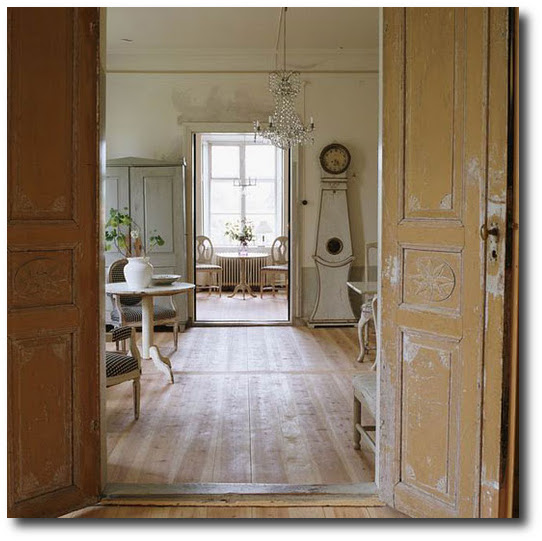
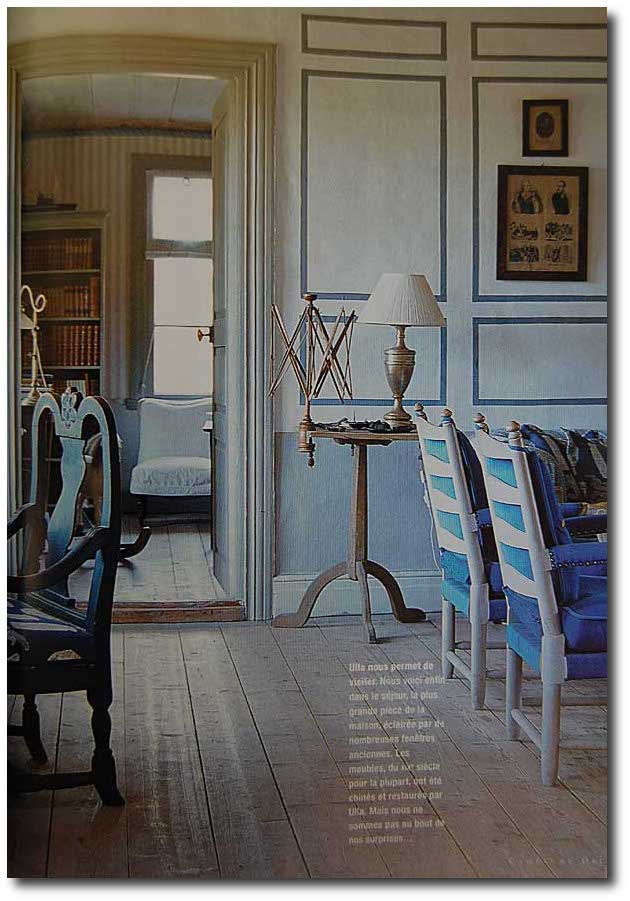
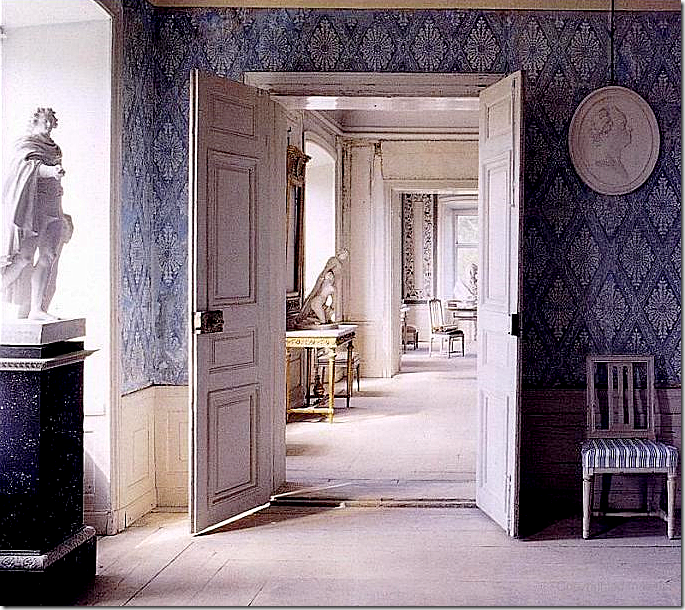
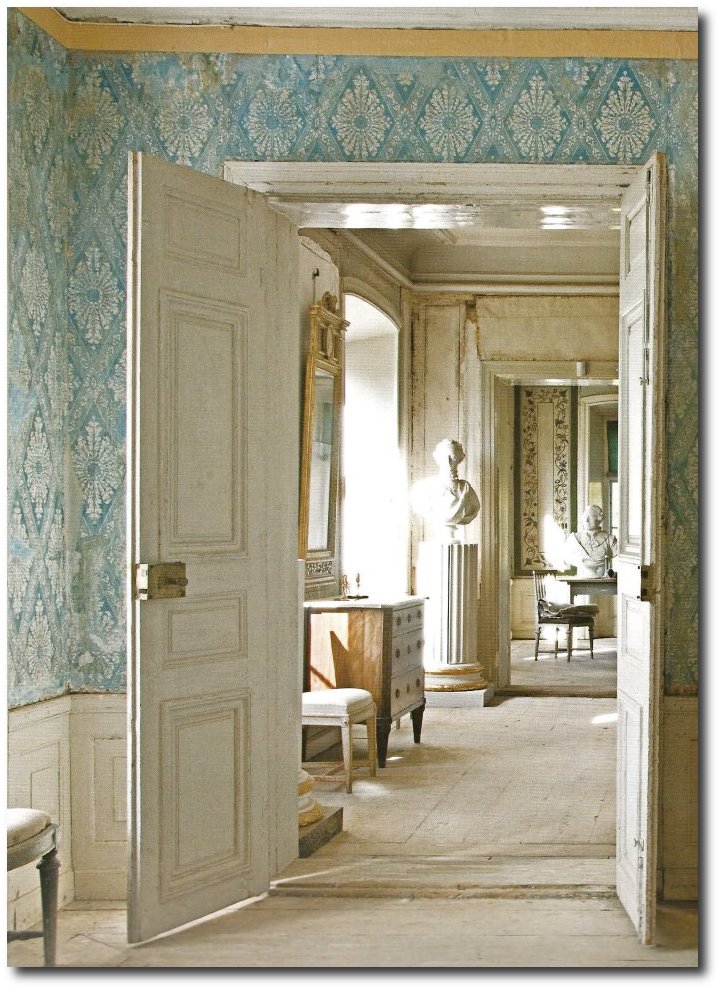
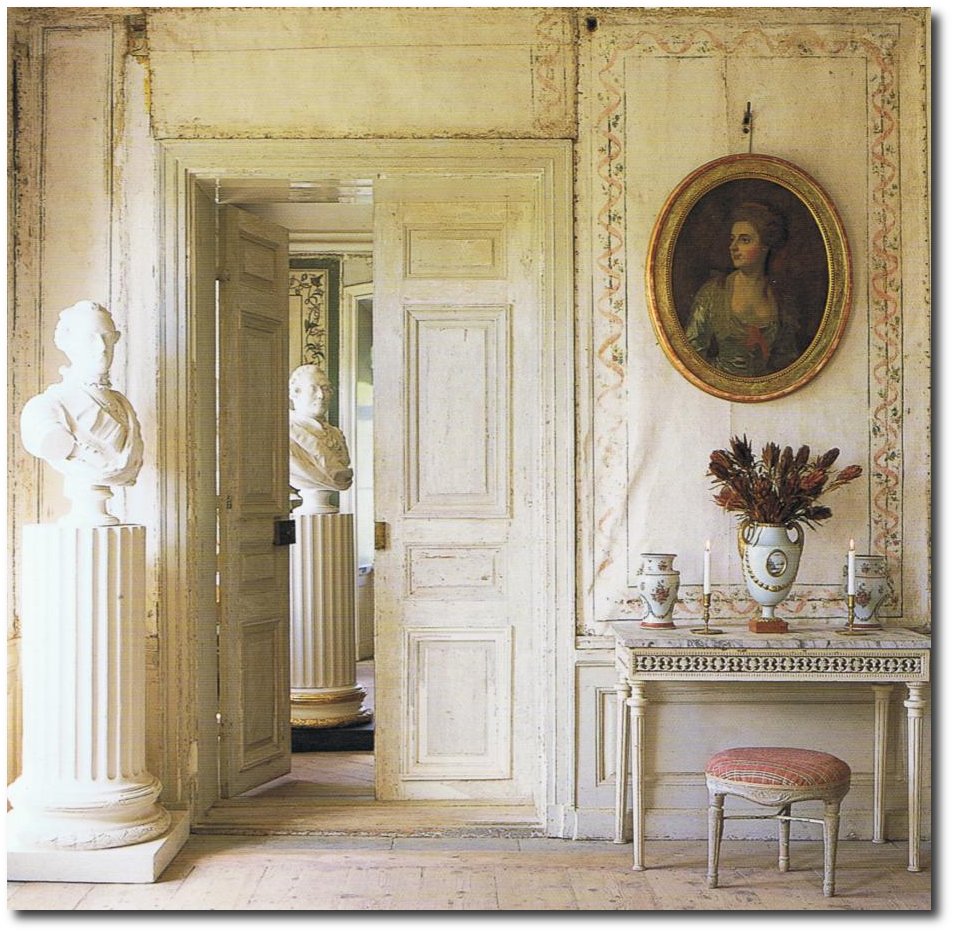

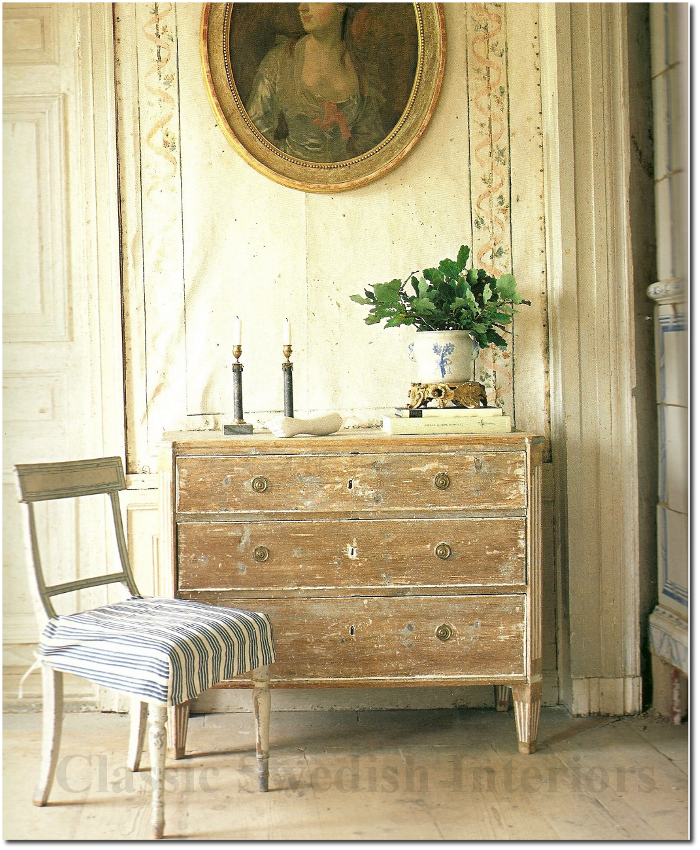
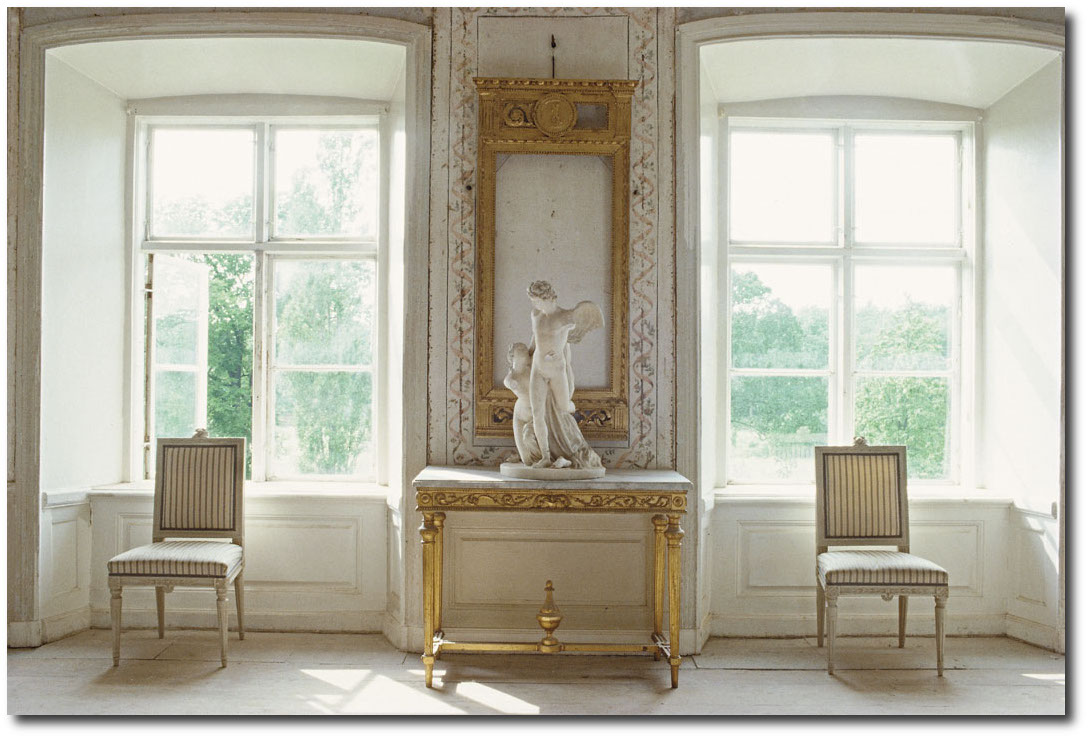
How Important Are Accent Pieces In A Swedish Home?
As we discussed in Part 1, Paneled walls can bring the Swedish flavor into your home and give you the Gustavian appeal you are after.
Another element that we see in Swedish historical homes are sitting areas using what we call today as “accent furniture”. It was common to find a number of sitting areas around the home using accent chairs, and tea tables.
2. Accent Furniture
Today accent furniture has become more popular again. We have been used to over-sized sofas, and forgotten what side chairs and tables can do for a room.
Swedish design is based around symmetrical looks. In the living room above, we see two white painted chairs in a Gustavian buffalo check paired with a black painted Swedish bench. In other photos of this room the black bench is paired with a Rococo table and the furniture seen in the rest of the home is moved around. Here we see a round white painted tripod tea table. Using accent furniture allows you to move the furniture around the house like they have done with Barbro’s home.
Smaller accent furniture became popular in France in the 17th & 18th centuries, and caught on in Sweden. The Accordion Side Table is one example of smaller scale furniture that existed in France. The accordion table itself wasn’t something seen in Sweden, but the idea of smaller tables became popular, or functional at the time.
Tables didn’t just look pretty, they served a purpose in the home. Side tables were practical for playing cards, having tea, and doing fine needlework. Writing tables were one of the most common uses for tables in this time. Tables with folding leaves were extremely popular in Sweden. Tables were pushed against the wall, and were then brought out for dinners, crafts, and schooling.
Sofa tables were designed to appear before sofas. These tables were long and narrow, and often had folding leaves which enabled the person to sit at the sofa and use the surface of the table without having to move the table closer to them. Consider adding a table paired with a sofa instead of a modern day lower “coffee table” that is seen in most homes. Or add a set of upholstered benches in front of your sofa to tie in matching upholstery.
Picture Credits– A Special Thanks to Campagne Decoration Magazine, Photos featured on Aged And Gilded Blog & Master Henry Blog
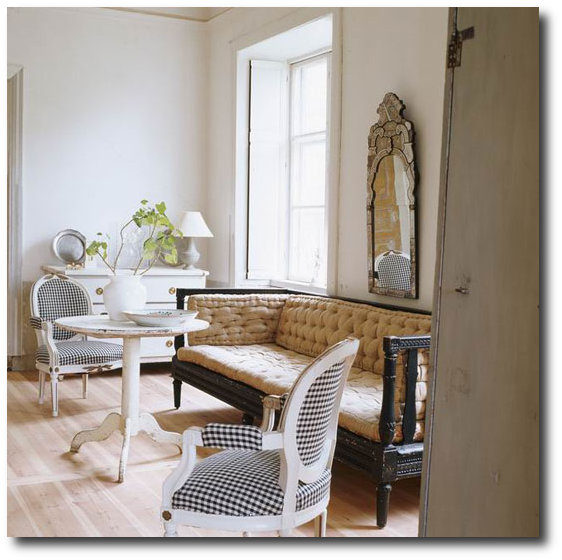
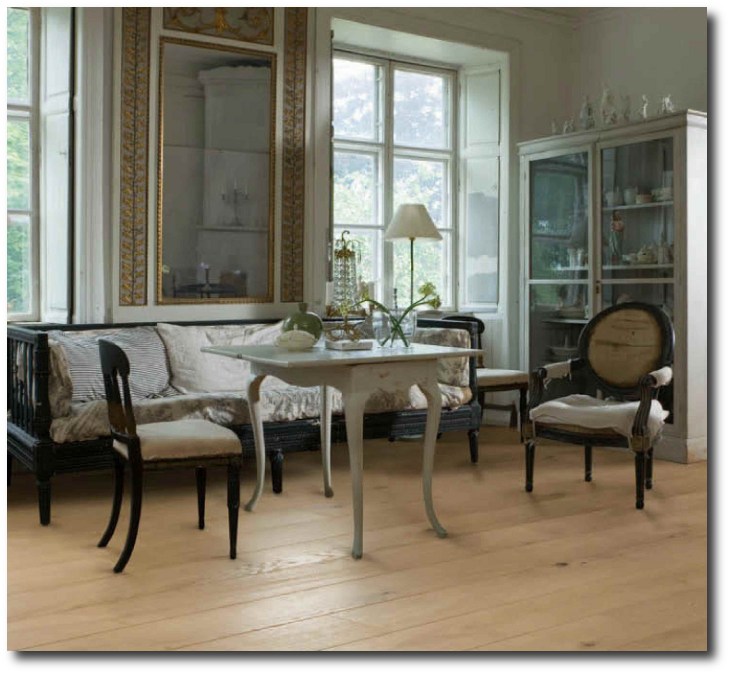
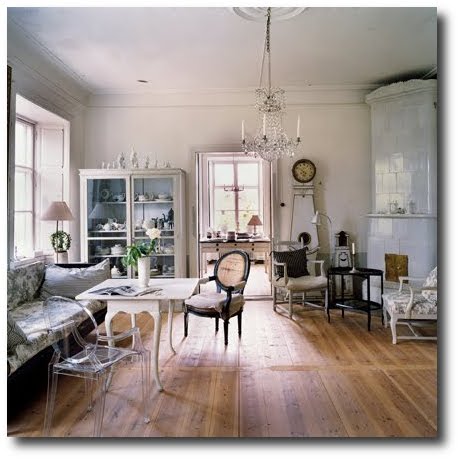
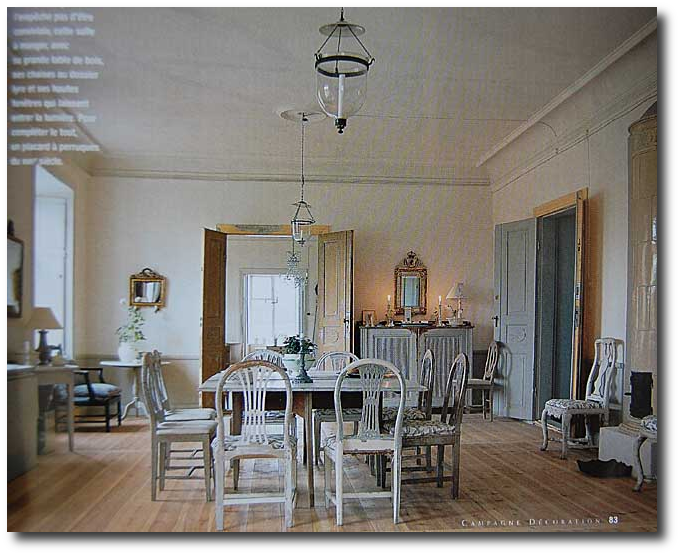


Painting Swedish Looking Furniture – 3 Tips / Part 3
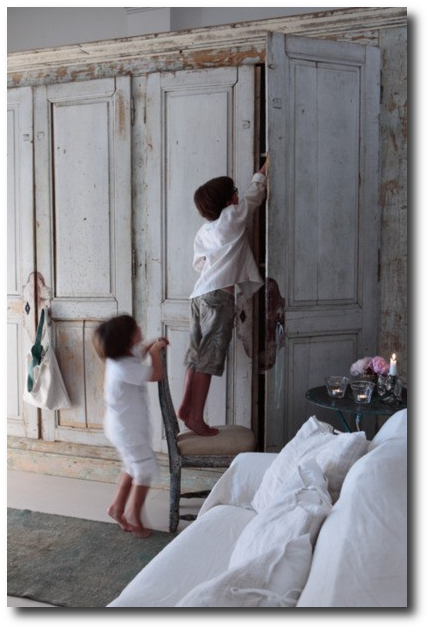 Picture Credit Habitania Work Rooms
Picture Credit Habitania Work Rooms
As we discussed in Part 2, Accent furniture, such as Gustavian chairs, smaller tables, drop leaf tables, stools, and benches can be brought into the home, and used instead of the larger scaled furniture that we are used to today to achieve that Swedish Gustavian look.
Another element that draws people to the historical Swedish look is the painted furniture. There is an art to getting the rich patina that is seen on true antique furniture found in Sweden. Almost anyone can find vintage French furniture in their area which can be distressed using a number of techniques to give it a historical appeal.
In this early post I wrote, I describe some of the paint techniques I have used to achieve great white painted furniture.
Here are some of my best tips to getting realistic Swedish painted finishes……
1. Work with colors that are muted. If you have ever mixed paint before, think about the colors that are produced when black or white paint has been added to a color. In the 17th and 18th century, there was a limited color palette available, so black and white paint was added to an existing color to produce a shade that was darker or lighter. On one of my pinterest boards, I compile some colors that will give you ideas of ranges of hues that are very appropriate. Annie Sloan has a wonderful range of colors which all are muted, yet vibrant paint shades which I suspect were based off the French style that she is so attracted to. She has put together a fabulous palette of colors which would work in any French or Swedish styled home.
Don’t ever work with colors with really bright pigments. I cannot blame anyone for being confused as there are thousands of shades of paint to pick from. The furniture should look aged, and color appropriate for the century you are after. I guarantee you, getting a really nice finish on a piece of furniture doesn’t have to be complicated.
2. Strip Or Sand To Get Down To Bare Wood.
A raw wood piece of furniture is always the best to work with. Although finding a piece of furniture that is untouched with paint rarely happens. Starting off with a piece of furniture that is not painted is ideal, but if it does have paint, consider comparing the the color you have picked out to the color the furniture is painted in currently.
Would you mind having the original color showing through?
If not, consider spending the time stripping off the paint. A perfect strip job isn’t necessarily if you plan on re-painting it, but enough of the paint removed will give you a new wood surface to work off of.
I have seen black painted furniture with distressing showing white beneath, and it doesn’t look great. A base color of red looks terrific with black painted furniture, or just plain wood. If you don’t want to strip the furniture, (as it is a lot of work) consider giving a good deep sanding to the furniture, especially to the areas you plan on distressing.
Often times if stripping the furniture is something I don’t wish to do, I sand the furniture quite well as a first step, paint it in the color I plan on working with, and then sanding it again as a third step. This allows me to touch up the original paint color that shows through, while leaving some of the distressed areas that show off the wood. It is a lazy way of getting the finish, but the results are quite nice.
If you plan on doing multiple shades such as the chest below, consider colors that work really nicely together. White works nicely as a top color.
Swedish Distressed Chest From Atelier September
Distressing gives your piece of furniture a depth, which is often seen in Swedish antiques. I am not afraid of roughing up my furniture, and I am not afraid of altering an antique. Many antique dealers caution people from painting furniture, because it does loose the natural patina, and because of that, it often looses the value. This is a wise piece of advice to those people who are looking to “invest” in heirlooms for the value.
If you always wanted a white distressed cabinet, paint it, and don’t be afraid to do so. My motto is that you have to first love the piece, because after all, it is in YOUR home. Your children may have a totally different style in mind for their own home, so do what makes you happy, rather than looking at furniture as items to pass down to family.
I used to sell used furniture for a hobby, and always ran into the problems with paint sticking properly. Either you tore off your arm by sanding the heck out of every piece, or you ran the risk of the paint peeling later on, which lead me to use oil paint. Not every oil paint brand is the same. Some brands are so hard to work with, that they will make you pull your hair out. It is almost impossible to find oil paint in a finish that is either flat or eggshell. You won’t find glossy Swedish antique furniture, so don’t use it on your furniture. The look should either be eggshell, or satin.
Cover Stain By Zinsser is a fantastic oil primer which I discovered by accident, and almost was beside myself when I discovered how well it performs. You can buy this at Home Depot and almost every Hardware Store, and the best part of this paint is that it is TINTABLE in almost all the lighter shades of paint samples such as Behr, Martha Stewart, and so forth.
High Hide Odorless Oil Primer without Sanding – Odorless Primer
I bought the paint, because I couldn’t send out a piece of furniture which would later peel. I wanted a paint that could stick to anything and not scratch. Oil based paints are not environmentally friendly. The trade off with this paint is that it has a heavy smell which disappears after it has dried. You will need to use a paint respirator, and I emphasize that recommendation.
The most surprising aspect to Zinsser’s Coverstain Primer is that it is not a thick paint. It is rather thin, and goes on like spreadable butter. You rarely need an additional layer of paint, because it is oil after all, and isn’t like water based paints. Oil paints tend to self level as they dry, leaving almost no brush marks. Oil paints do cover well, and hold up wonderful. Unlike other oil paints, which can take up to a week to cure, this Coverstain dries to the touch in 3 hours, and cures over night.
The other reason why I recommend this product, is that it is sand-able. Almost every other oil paint brand I have tried doesn’t sand very well, and often leaves the finish needing an extra coat. Because Zinsser’s Coverstain dries flat (matte) sanding blends in rather nicely. In the past, I often added two coats of the tinted primer, and then sealed it with a Polycrylic water-based sealer.
Polycrylic is one of the best finishes to use on white based furniture, because it doesn’t yellow over time, like polyurethane does. With the polycrylic, I would apply it with a brush, and then with a damp white cotton wash rag, I would just wash it off. This would give me a seal to the paint color, while at the same time, maintain the flat, or eggshell finish that I enjoyed.
Another tip I would recommend is to buy a good quality angle paint brush for water based paints. I have used these with my oil paints, and my brush sits in paint thinner for weeks, and it is still not damaged. Regular chip brushes are ok, and inexpensive enough to throw out, but a good quality brush won’t leave paint strokes. Someone suggested to me to invest in an expensive brush, and I pass on those words of wisdom.
Swedish Accent Chair With A Fabulous Paint Finish $506
18th Century Buffet, circa 1760 Jane Moore Interiors in Houston
Picture Originally Featured on Indulge Decor Blog
Stunning Swedish Styled White Painted Accent Chair
Neoclassical Swedish Styled Accent Chairs Sold In Pairs $983
3. Glaze Your Furniture With Brown Glaze…..
Glazing is so easy, it takes minutes. If you can wipe your table after dinner, you have the skills to glaze! It is that easy. A glaze is a translucent binder which paint pigment is added to the mixture to produce a translucent color. You can buy glaze mixed together at your local hardware much like ordering paint, or you can buy glaze alone and mix in paint yourself.
Buying brown glaze already mixed will go a far way if you paint furniture for a living. I used it on all my painted pieces, including my white furniture.
Blend & Glaze Decorative Painting Liquid
Ralph Lauren Faux Technique Glaze
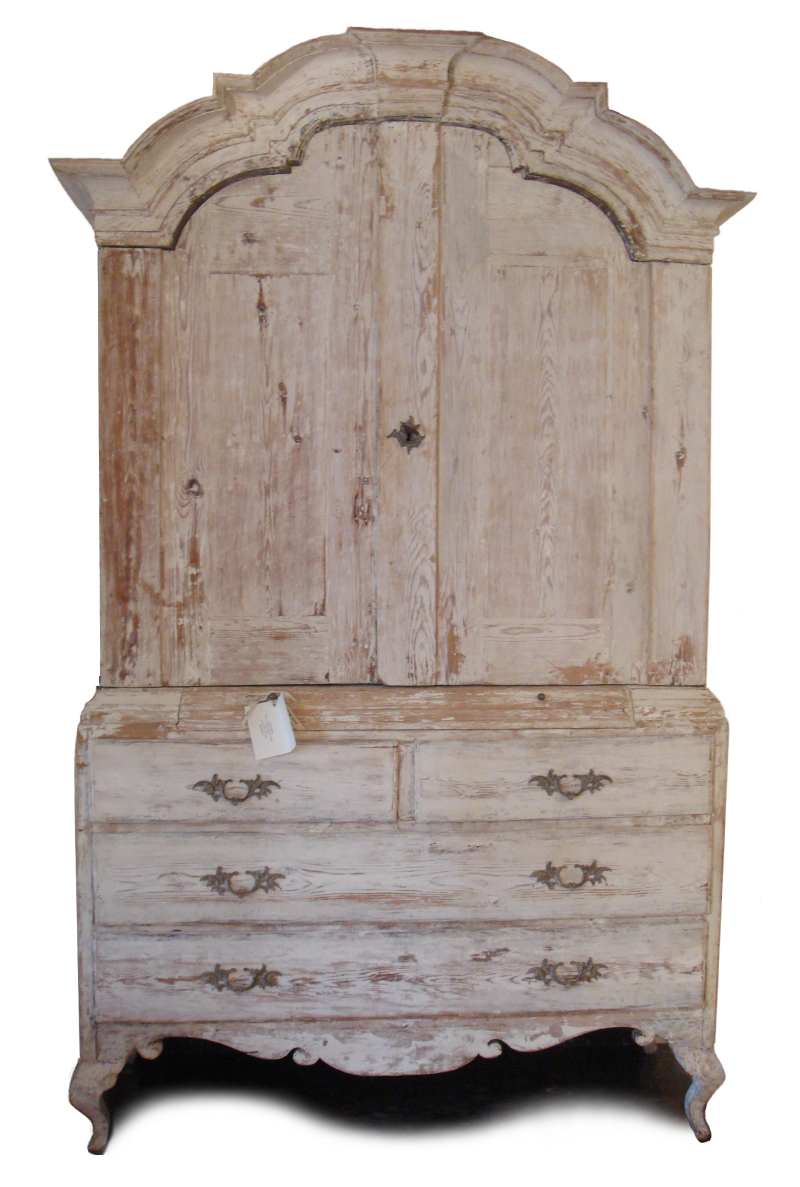
I have discovered that glaze can be applied in two ways. You can apply it with a paint brush, let it stand for 3 minutes, and take it off with a slightly damp rag. With white furniture, even though you may feel you removed a lot of the glaze, the little bit that is left gives your furniture that slight change in color.
With flat finished white furniture, I give some wise words of wisdom. Add a coat of polycrlic before you glaze. You could even dilute the polycrylic with a slight bit of water, OR, just brush on a very small amount on to your furniture, such as dry brushing techniques. The reason for this, is that your furniture can turn a shade of brown, which is not what you are after. White furniture will have a hue of brown, but you don’t want the glaze to STAIN the paint.
Another trick is to work with a creamy white, not a bright modern white. Your whites should always have undertones of brown or green in them. When glazing white furniture, if the finish is flat or eggshell, you will need to work fast in pulling off that glaze. If the finish is satin, you will have a bit more time.
For painted furniture such as blue, or darker paint colors, glaze can be added, and it makes a world of difference. Often times I just paint on the glaze, such as you would just dry brushing the furniture. I use the term “dry brushing” as your paint brush isn’t loaded with paint. A small amount is necessary to make a dramatic difference. A brighter colored blue, will be muted when brown glaze is added, so experiment with brighter paint shades with brown glaze, you might be surprised what beautiful finishes can be achieved.
These Swedish chairs were likely scraped down to the original paint
Look how nice white upholstery looks with gray paint.
Originally featured on Romantiskahem.blog
This beautiful console table featured on The Paper Mulberry Blog, originally from Appley Hoare Antiques
Tara Shaw Swedish Chest- Coach Barn Now Sells Tara Shaw’s Collection
Reproduction Swedish Tub Chairs From Amazon $775
Swedish Distressed Chest From Atelier September
A Stunning Trumeau Mirror From Tone on Tone Antiques,
Featured on Henhurst Interior Blog
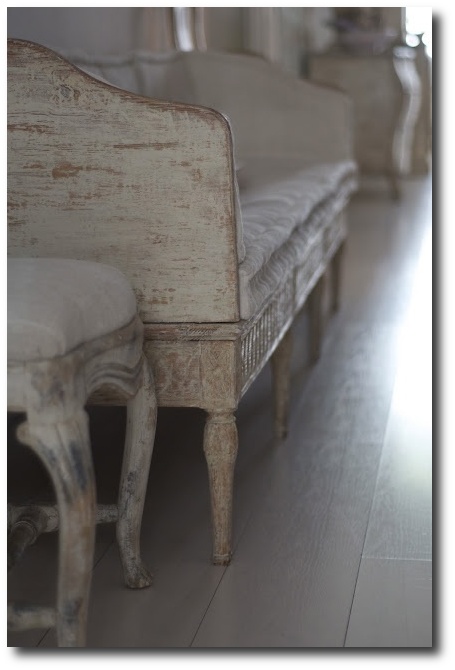
Swedish Aged Paint Finishes From Antiqbr Blog
An extravagant painted sofa in terrific blue gray paint with painted ormolu
From Tone on Tone Antiques Featured on Featured on Henhurst Interior Blog
Swedish Aged Paint Finishes From Antiqbr Blog
A Few Previous Articles Of Interest
- – White Painted French Furniture– The French Provincial Furniture
- –25 Ideas Of How To Incorporate Orange, Pink and Coral Into Your Home- The French Provincial Furniture
- – Ideas For Embellishing Painted Furniture– The French Provincial Furniture
- –French Provence Red Check Textiles– The French Provincial Furniture
- –Distressing Painted French Provincial Furniture
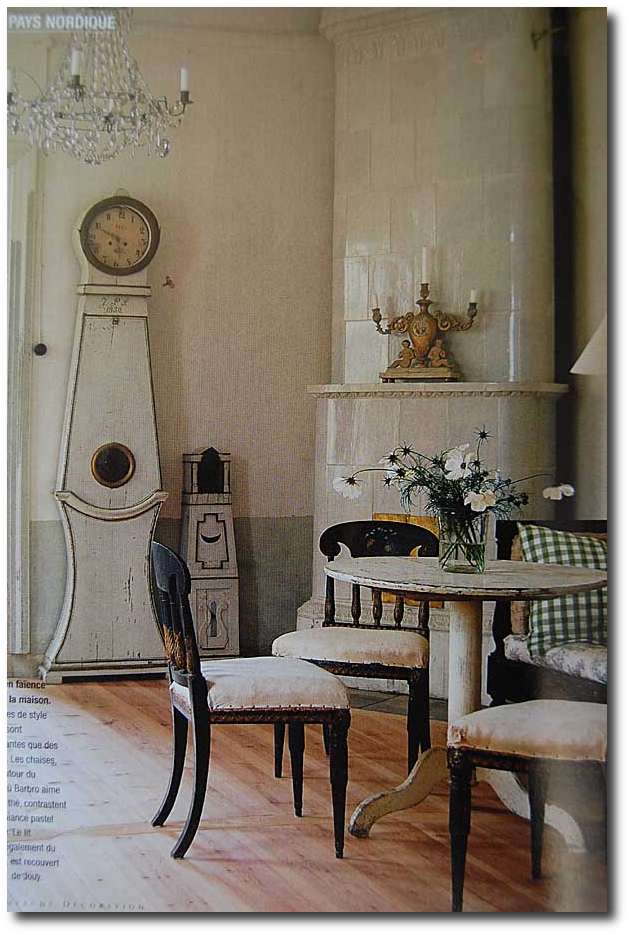
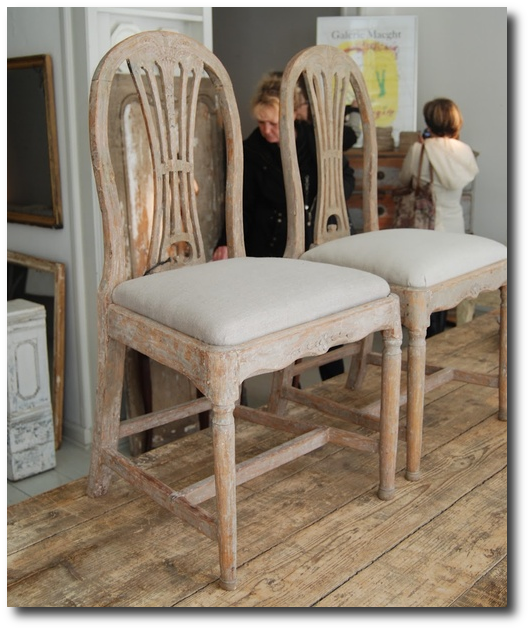
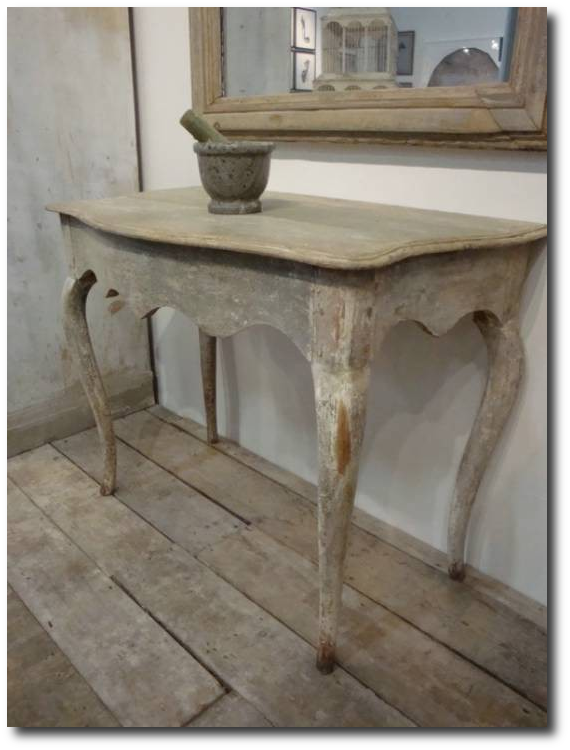
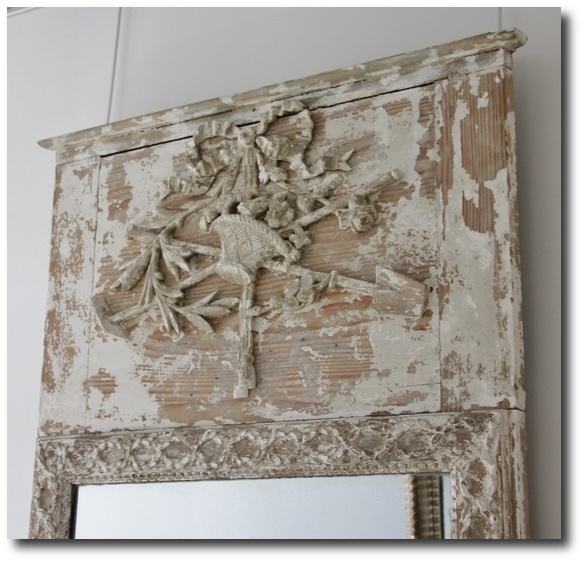

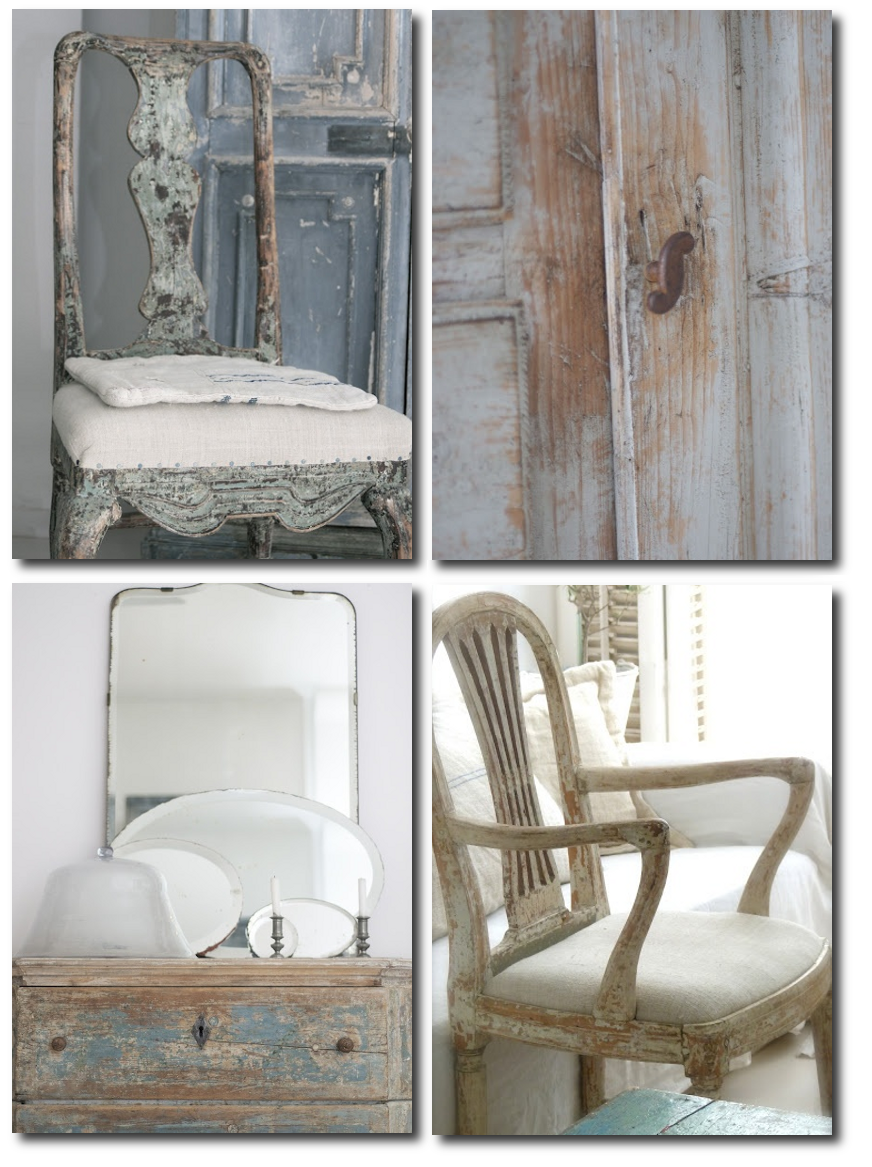
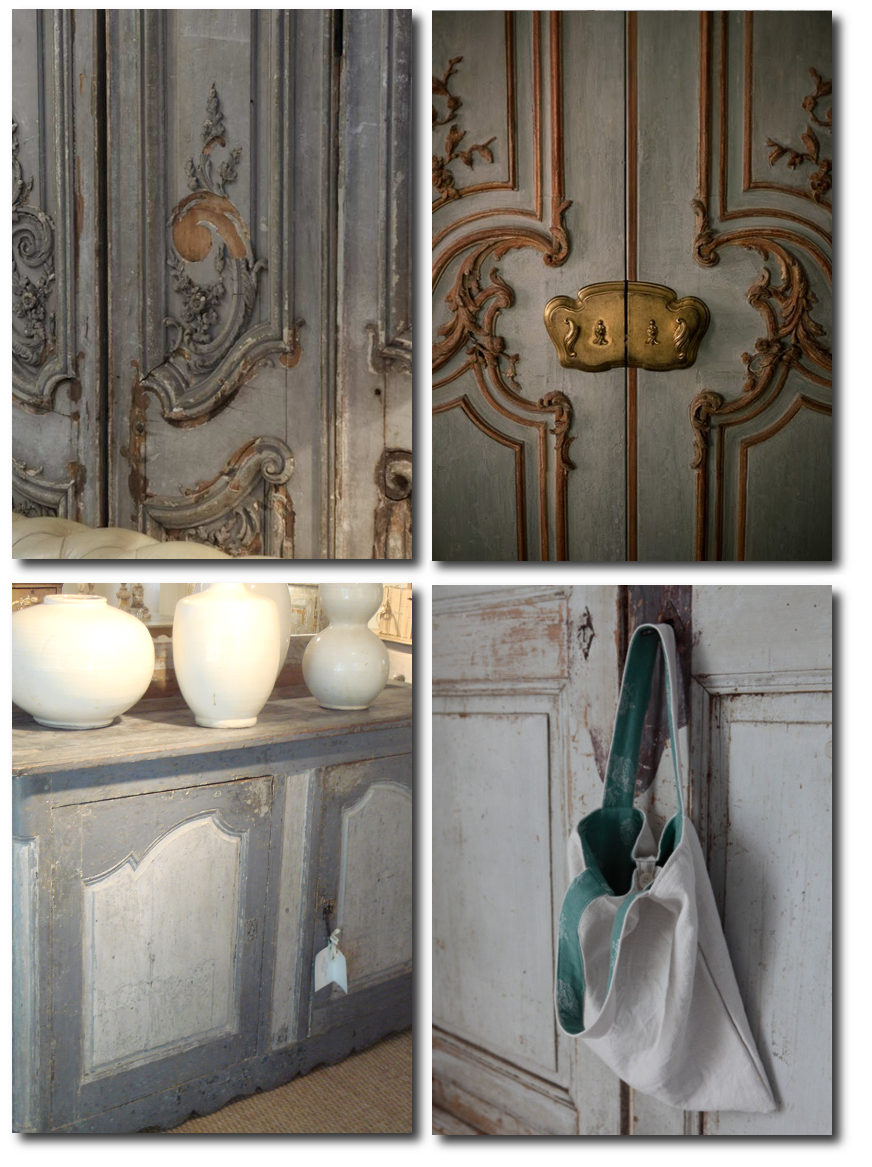
Swedish Mora Floor Clocks
Mora Clock in Salmon Paint Sweden, Circa 1820, Tall case clock signed “Matts Jonson/Mora”, Sweden circa 1820. Wonderful salmon paint with gilded detail, all having an exceptional patina. Original clockworks have been newly cleaned and adjusted
Swedish Mora Clock Painted In A Soft Blue With Cream Painted Carved Accents From A Tyner Antiques
Sweden Circa 1790 Early Mora clock, Sweden circa 1790, in original pale salmon paint. The bonnet features beaded detail around the face and the crown, as well as oval glass panels on either side for viewing the clockworks. Both the bonnet and case retain their early, rounded glass. All original with newly cleaned and regulated clockworks Cupboards and Roses
Below:
1. Swedish Painted Pine Tall Case Clock, C. 1780, of the Rococo Style with carved and polychromed case detail. Mora movement and original paint decoration – Lillian August Designs
2. A Swedish tall clock in a rare pillar design with and original faux painting resembling marble. The face is an unusual combination of metal exterior with a gilded center echoing the gilt paint on the feet. The clock is in working order with the added feature of a calendar. Sweden, circa 1800. Dawn Hill Antiques
3. Swedish tall case clock, c.1780-1800, of the Gustavian period, the rococo case carved with neoclassic gilded motifs and retaining traces or its original paint. Mora movement. Lillian August Designs
Below:
1. Mora clock, Sweden circa 1820, with dial signed “P. Svensson / Rageröd.” Scandinavian pine case with reeded panels and dentil molding under the bonnet. The original clockworks have been newly cleaned and regulated. Sold By Cupboards & Roses
2.Sweden Circa 1848 “Mora” clock, Sweden dated 1848, with a beautifully carved case retaining its original painted decoration including the two sets of initials commemorating a marriage. Inside the case is a record of the clock’s provenance which reads,”Carl Nilsson, 1786-1850. Worked as a clockmaker in Northern Slätthult, Jönköping County. Buried in the cemetery of Villstad. This clock was purchased June 13, 1964 by Emil Johansson.” Sold By Cupboards & Roses
3.Antique Black Swedish Mora Grandfather Clock, circa 1850, Antique Swedish Black Painted Grandfather Clock. The lovely curves of this clock are typical of the Mora grandfather clocks, famous from Sweden. Sold by Scandinavian Antiques
Swedish Mora Clock From swedishinteriordesign.co.uk
Swedish Mora Clocks From swedish-clocks.com, rlgoins.com, Swedish Interior Design
Shannon Bowers Home, Swedish Design- Painted Blue Mora Clock
Swedish Painted Pine Tall Case Clock, C. 1780 Lillian August Designs, Swedish Interior Design
The Principles Of Scandinavian Design
You read and hear quite a lot about Swedish design, these days – or maybe Nordic or Scandinavian design principles. Since the advent of IKEA as a global phenomenon over the past couple of decades, these terms usually conjure up images in most people’s minds of a lot of quirkily-designed innovative flat-pack furniture, often in bright primary colours. Of course, there is a lot of truth in this view, but it rather over simplifies things.
Scandinavian design as an overall concept first emerged back in the 1950s as a design movement characterized by straightforward designs, a general minimalist approach, a focus on functionality, and, yes, the low-cost mass production techniques we’ve come to associate it with today.
It was perhaps the Lunning Prize, which was awarded to outstanding Scandinavian designers during the 1950s and 60s that was most instrumental in making Scandinavian design what it is today – and helping to define it. And if there is any kind of real ‘definition’, then it’s based on the idea that functional everyday objects can be beautiful too – and that such objects should be easily available to all rather than a privileged few.
Julia Foster Decorative Antiques – juliafosterantiques.com
Simply Scandinavian is a book by Sara Norrman- Amazon $19
Simply Scandinavian is a book by Sara Norrman which celebrates unpretentious and simplicity with understated elegance in interior design. Scandinavian rooms are typically light, airy and bright, with modern furnishings mixed with pretty antiques and vintage pieces. Natural materials, especially wood completes the style of cool, calm and uncluttered living spaces. The main focus chapters of this book include, elegant simplicity, vintage-inspired, pared-down modern and contemporary rustic. 160 pages, published in 2010 by Ryland Peters & Small
This thinking reflected the growth of social democracy in Sweden and other Scandinavian countries over the same (post war) period, in addition to the availability of mass-produced low-cost materials and mechanisation of production. Scandinavian design made full use of pressed wood, plastics, anodized or enamelled aluminium and pressed steel, for example, as it does today.
In recent years, the march of globalisation really has taken Swedish design to the world’s masses in developed countries in highly efficient ways – but ways which are also sustainable as care for the environment is very much central to Scandinavian design philosophy.
We can now see an increasing mix of styles and cultures which is an inevitable result of that globalisation in mixing Scandinavian design techniques such as an ever increasing interest in pine furniture.
Many classic dining tables, for example, may owe as much to modern Swedish design principles as it does to a traditional French farmhouse as today’s furniture designs become increasingly eclectic.
KETTNER’S – Restaurant & Champagne Bar
Kettner’s is located in 29 romilly st, soho, W1D 5HP london.
Elle Decor Magazine – Our Little Big House Blog
Home of British Photographer Paul Massey- See More of this home here
Home of British Photographer Paul Massey
Hanni and Steffen’s Swedish Home
Vintage Home by Judith Wilson On Amazon
It is the perfect alternative for modern white interiors, ideal for family
living—as extra scuffs won’t ruin the look—and low maintenance as well as
relatively inexpensive. For home designers looking to develop a new style from
old looks, this essential resource provides information on how to shop and
search creatively as well as how to identify and avoid fakes. Tips are also
included on mixing various vintage objects creatively in order to create
welcoming and eclectic interiors in any room.
Scandinavian Interior- Taken By Don Freeman Photography
